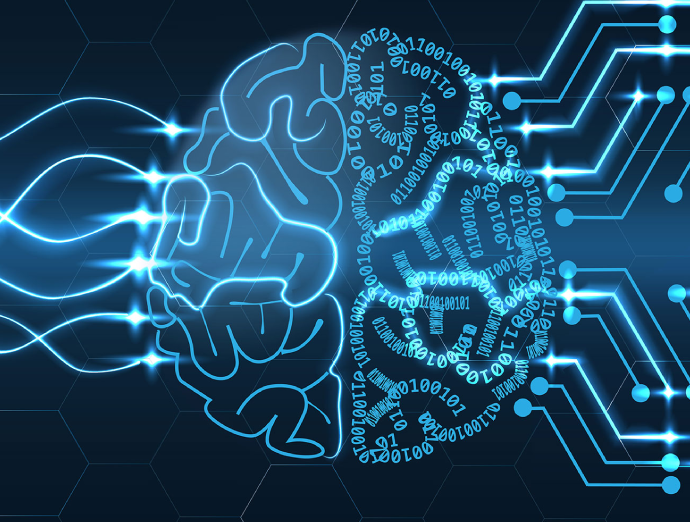What comes to your mind when you see ML? Machine learning development is as simple as it seems machines that learn. But is the definition limited to such small words? The technological advancement has leveraged the use of AI/ML algorithms. And these inevitable technologies brought new capabilities for industries across the verticals.
As per reports, the market size projects $31,36 billion for the global machine learning platforms by 2028. So, these huge statistics point to the surging use of smart ML prowess in various ways. Do you also want to know the emerging trends to include in your business? Let’s dive in to explore more.
An overview of Machine Learning development in the market
AI or ML are quite novel technologies with great buzz around the sectors. But ML is a subset of AI that helps machines to learn from previous data. So, you make optimized decisions without any extra commands. ML algorithms are way far beyond just predictions.
As per reports, the global Machine Learning development market is expected to grow at a CAGR of 38.8% to $209.91 billion by 2029. The algorithms support the intelligent decision-making process too. So, not just for the firms, ML is also beneficial for the job seekers.
As we can see the a dramatic rise in the ML professionals for the role. So, the automation integration makes it easier for the management also.
What is the importance of Machine Learning development?
Nowadays there is a popular saying that, ‘data is money.’ And why not? Data has been a crucial player for ages. Earlier there used to be paper attendance but now you can just punch in! So, the transformation from old practices was not a drastic process.
But with the latest data-driven decisions, businesses get the most. Of everything from decisions, revenue, profit, and investors. ML has the key to unlocking the future capabilities of businesses. It also, helps them to be a step ahead of the competition in the market.
Here are some benefits enlisted about the ML integration:
-
Automation
Multiple repetitive tasks in businesses may become mundane for humans. So, to optimize performance and speed up processes ML remains the best choice. As it focuses on complex tasks in less time. And it achieves the rapid processing of the datasets. So, that you get accurate results at great speed.
-
Forecasting
We all know Machine Learning development is a smart and future-focused technology. And whatever business uses ML gets the seamless forecasts. So, you get the knowledge about the future events to predict the future trends. Plus, the anticipation helps to be ahead of the market competition. And help you combat the potential business risks.
-
Personalization
Businesses need to have a unique market identity. As it helps your users to stay connected with you. Here, ML is a smart technology to start with such meaningful connections. It is the same concept as the IoT development for regular use. As future-focused technology offers personalized user recommendations. So, that you can grow your business in many folds with Machine Learning.
Industrial use cases of Machine Learning development
Machine Learning has the power to assist in transforming every business to success. And we know you believe in numbers! About 38% of business owners leverage ML to reduce costs and overheads. Now, that’s a sign to integrate the potential tech stack and transform your business. You name it and the ML is available for across the verticals.
Let’s look at how it empowers each sector.
1- IT
How can the IT sector fall behind if technology advances across all industries? The ever-increasing demand to develop the latest applications is quite a never-ending loop. And integration of ML helps the IT sector to flourish efficiently at a rapid pace. Plus, the cost optimizations and accurate predictions make it the best choice.
2- Agriculture
Technology transforms every sector equally. Even the traditional sector such as agriculture is rapidly surging. Machine Learning development in such sectors brings in time optimization techniques. Such as farm management in real teams. Moreover, farmers can manage crops, check climate change, monitor soil health, etc.
3- Finance
It is one of the inevitable sectors among all. The use of machine learning in the fintech business has been a wise decision. It drastically transforms the sector’s ability to manage data successfully. Also presents the most effective way to identify risks and defects.
4- Healthcare
This industry makes up half of the country’s GDP. And regarded as the most important sectors for developing technology solutions to incorporate. Furthermore, it enables medical professionals to write precise prescriptions. Also, establish a reliable relationship between the patient and the doctor.
Machine Learning model trends to consider in 2024
Here are some of the latest ML technology trends that you can follow in 2024.
TREND #1: No code Machine Learning
Machine Learning development gets integrated into any system with a set of code. However, nowadays developers hate the boilerplate code to ruin the experience. So, the first trend to follow for ML usage in 2024 is absolute NO code! The processes in the No code don’t involve the full-fledged development process.
So, you can easily design, develop, and deploy the required software development.
This trend offers:
- Quick implementation: With zero hassles of code completion the application gets implemented quickly.
- Lower costs: As you get the heightened automation it won’t take much time and resources. So, it cuts down the costs and overheads of the project.
- Simplicity: The No-code norm helps in drag-and-drop functionality to make simple development.
All these pointers simplify the ML processes. So that applications become more accessible to developers. Although it doesn’t become the alternate for the advanced projects. So, it becomes suitable for data analytics and predictive analysis.
Such as retail profits, dynamic pricing, and user retention rates. No-code became the developer’s choice and a great option for small businesses. The predictions made via ML algorithms offer the best support for development.
TREND #2: AutoML
Digital transformation came early with the integration of AI, IoT, and ML technologies. As we have discussed in the No-code, AutoML makes apps accessible. Automation is in demand across the industries. Even the ML algorithms make it the best use for the latest tech trends. However, AutoML aims to cover the gap and offer accessible solutions. So, that Machine Learning development experts don’t remain the sole dependent identity.
Data experts work on Machine Learning model development for the projects. Such as including features, design, post-processing, and other steps. Now we know these processes are quite complex. So, AutoML helps to complete these complex processes easily. This allows developers to prototype deep-learning solutions. So, they get the predictions without investing hefty money directly in development. And without any expert assistance in the prototype development.
AutoML offers improved data labeling tools to automate neural network infrastructure. The traditional method of data labeling brings risks of human error. And AutoML in such cases can automate processes in less time with zero hassles. It automates the process, lowers the human risk, and reduces costs.
So, that businesses can utilize the ML algorithms to focus on analysis. Also, Auto ML with AI Development solutions helps to analyze to become accessible. Plus, the renowned Machine Learning models lead to even smart AI development and chatgpt integration. We know how the OpenAI is surging with the great demand in the market. So, these extensive models can create visuals as per your needs. This kind of smart integration of AI/ML in industries will welcome new opportunities. Businesses can get ideas to generate product ideas. Artists can get more creative with the latest ideas.
TREND #3: MLOps
You must have known about DevOps and how it helps businesses. So, the concept of Machine Learning operationalization management is quite the same. It focuses on the practice of ML to develop software to offer reliability and efficiency. ML adds up the value of the software solutions to improve market value.
Whether it’s AI or ML you can integrate traditional methods with unique technology traits. So, you can own a different strategy to customize tech solutions. So, MLOps offers the latest formula to combine the prowess of ML systems into unified software.
We must understand why MLOps is necessary to work on huge datasets. So, you might need automation to speed up your processes. And to streamline the MLOps lifecycle. Here is the complete MLOps lifecycle:
- Customise and design the model as per business goals
- Acquire it and process the data for your ML model
- You can try the Machine Learning modeling
- And then validate it and deploy the software
- Monitor for any updates and improvement
MLOps also has a great way to address the systems scales. And it can’t deal with multiple scalability options. Majorly because of small teams, communication gaps, objectives, etc. So, with ML solutions implementation you can easily collect business-focussed designs.
Then for solutions, you must focus on relevancy, cleaning, features, and cloud hosts for the platform. We reduce the variability and reliability of enterprise solutions. And you might know Kubernetes is a DevOps tool for AI/ML workload management. As it is the auto-scaling and real-time resource optimization.
TREND #4: Full-stack deep learning
Deep learning frameworks are everywhere even to meet business needs. Deep learning came into existence to create some fancy ML models. So, this creation leads to missing real-world connections. So, all ML experts need to understand full-stack deep learning. Although you might not get the full stack expert in one go. Full stack training is a must to train your data scientists.
It starts by taking the backend on the cloud. Then work on mobile applications with edgy devices like Raspberry Pi, NVIDIA Jetson Nano, etc. Moreover, the full stack deep learning demanded libraries and frameworks. This automation helped the experts to automate tasks and courses. So, they can easily use the libraries for custom applications.
TREND #5: Generative adversarial networks
It is one of the crucial and groundbreaking technologies in the market. And it majorly deals with differentiating the types of images. The generative neural networks ignore the unwanted content. And these get checked by discriminative networks. Moreover, this GAN technology checks in balance to offer reliability. So, you must know this model won’t describe the given categories.
It only has a conditional probability of differentiating the categorized samples. And it will focus on the distributed probability. The network’s technology helps to identify multiple images. So, you can easily integrate large-scale tasks, image removal, etc.
TREND #6: Reinforcement learning
Moving on to another buzzing trend. Before that, we brush up on some basics for you. Machine learning has three major paradigms, namely:
- supervised learning
- unsupervised learning
- reinforcement learning
In the last paradigm, i.e., reinforcement learning, the ML system for a seamless experience. The production environment can then use the reward system for learning. Such as a reward or penalty to assign value to the observations.
So, if you want to achieve the highest level of success then you choose reinforcement. You take the example of reinforcement turning for animals. Or you can utilize it in video games or AI board games. But if you think twice from the security aspect reinforcement ML is not the best choice. The algorithm has a conclusion with so-called actions.
So, it may take some delegating and inaccurate learning decisions. However, it can endanger users’ results and can increase the chances of errors. So, safer reinforcement action is crucial to tackle safety-related measures. Plus, reinforcement learning can complete real-world tasks without harmful actions. So, the data scientist’s arsenal must have RL as a tool.
TREND #7: Unsupervised ML
Automation improvisation leads to almost zero human intervention. So, it became a trend! Quite interesting, right? The unsupervised ML trend showcases promising success across industries. From the mentioned Machine Learning development, Unsupervised ML is the other type. We understood the techniques that machines can’t achieve otherwise.
As, they might take time to understand, analyze, and custom solutions. So, there is a constant need to feed the system with data. From this point, we can get Unsupervised ML offers vast opportunities. So, this allows unlabelled and controlled data. As the data scientists won’t get interfered with. And can utilize data learning programs can customize solutions.
Even supports quick data structure review to use data patterns carefully. And improve the decision-making processes to make huge business profits. Navigating within the trend introduces us to a technique called clustering.
The grouping of the data points with common features and ML programs. So, you can have a better glance at the data sets and patterns. Interestingly, this trend can also help in anomaly detection in many use cases. These algorithms can help to detect and rectify any issues.
TREND #8: Shot Learning
Last, but not least. Data collection remains the focal point in the data learning techniques. And it is tedious to manage the huge data sets with traditional methods. So, the performance of the ML algorithms directly relies on the quality and data type. Machine learning modeling helps to categorize the data sets as per different types. So, that you can classify the data patterns easily.
In this few-shot learning works on the constrained data. It has limitations such as image, facial, and text classification. And doesn’t need a lot of data to create a usable model for complex solutions. So, it can work on the latest data sets. Such as to discover new drugs. Or it can be added to existing ones. However, you must train the models before integrating any unclear molecules into the finer substances.
Likewise, one-shot learning needs less data to work and identify patterns. It might have some facial recognition for various applications. The system can compare the ID to a person’s image via the official camera. So, it offers data-checking practices to check data from the database of information.
Talking about the last paradigm of this extensive learning practice is zero-shot learning. It was initially quite a contradicting prospect to talk about for the processes. Zero-shot ML systems observe objects and gain information about them. So, that it can help you classify the category. If you take a tiger and a cat you can differentiate by characteristics.
However, this categorization is not mentioned during training. Instead, it can classify the objects and the classification. So, this is one of the useful techniques you can use in systems. Such as image classification, object detection, NLP, and other classification types.
Conclusion:
Machine Learning has been one of the crucial ad in-demand tech integration. But how can implement such technology without zero knowledge? So, mentioned above are some expert tips and trends you can follow. Or you can consider a Machine Learning development company for your projects.
FAQs
1- How can machine learning impact business?
Machine learning algorithms enable firms to better estimate demand, improve inventory control, and discover inefficiencies. As a result, delivery times are shorter, expenses are lower, and consumers are more delighted.
2- How might machine learning be utilized to benefit businesses?
Machine learning programs help organizations save money by improving inventory management and increasing manufacturing efficiency. They are adept at detecting possible equipment faults before they occur. Machine learning software can forecast failure with 92% accuracy thanks to sensors attached to the equipment.
3- What function does machine learning play in marketing?
ML-powered analytics solutions are widely utilized in marketing, allowing businesses to estimate consumer demand, analyze market trends, predict customer behavior, and automate decision-making. Predictive analytics may assist brands in optimizing their marketing tactics, increasing conversion rates, and maximizing ROI.
4- What is machine learning in business?
Machine learning is a data analysis technique that uses automation to develop analytical models. It is a subset of artificial intelligence predicated on the notion that systems can learn from data, spot patterns, and make decisions with little human interaction.
5- What is the business model in machine learning?
Business model components—the science of Machine Learning says A business model explains how an organization generates, delivers, and captures value. Machine Learning enables new business models that can outperform more traditional approaches, resulting in increased: Growth: New business models can provide access to new clients by introducing new products and services.






















